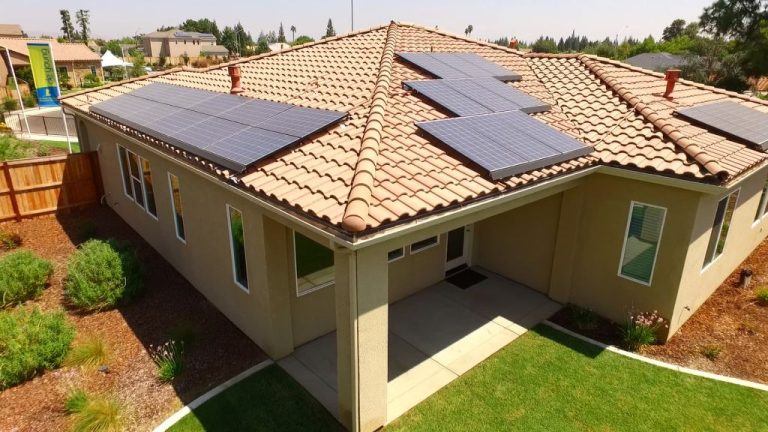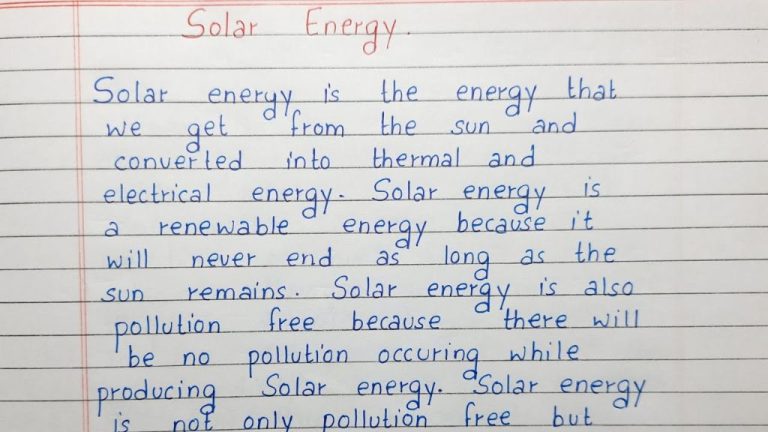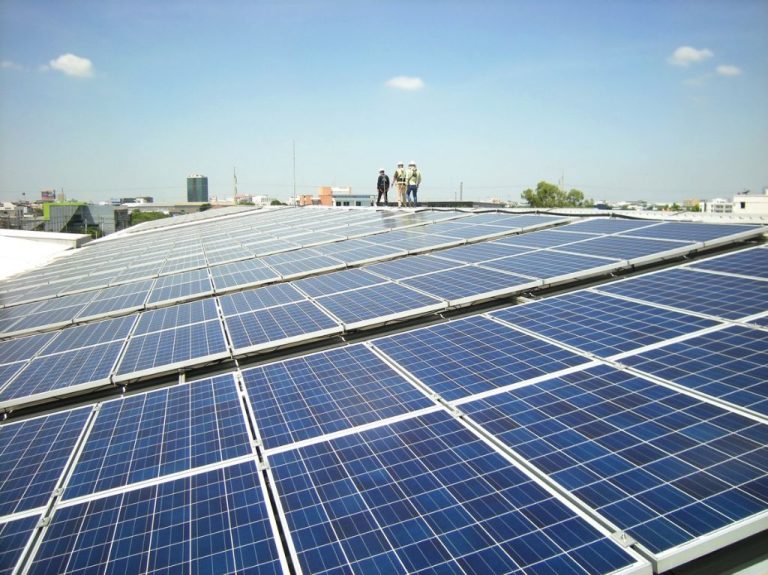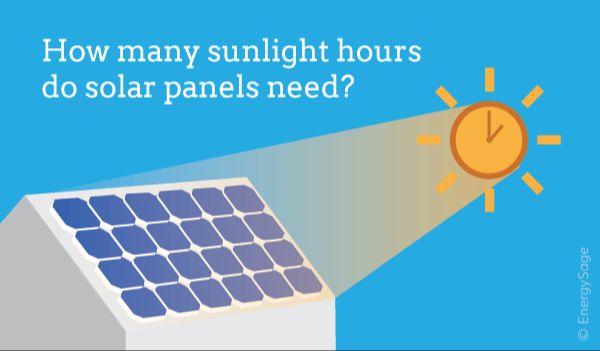Do Solar Heaters Work In Winter?
Solar water heaters, also known as solar domestic hot water systems, are a renewable energy technology that harnesses the sun’s thermal energy to heat water. They consist of solar thermal collectors, usually mounted on the roof, which absorb heat from the sun and transfer it to a storage tank. This preheated water can then be used for domestic needs like bathing, cleaning, and heating.
During winter, solar heaters tend to be less efficient since there are fewer daylight hours and the sun’s intensity is reduced. This means the system generates lower temperatures and may not meet all hot water needs during cold weather. Winter is considered the off-season for solar hot water production in many climates.
How Solar Thermal Systems Work
Solar water heaters rely on solar collectors and the sun’s radiation to heat water or other heat-transfer fluids. The solar collectors contain absorbing surfaces, often made of treated copper, that are very efficient at converting sunlight into heat energy. When sunlight strikes the absorbing surface, it causes the collector temperature to rise. The heat energy is then transferred from the absorber plate to the water or heat-transfer fluid passing through the collector.
Solar thermal systems use pumps or natural convection to circulate water or other heat-transfer fluid through the collectors. The hot fluid exiting the collector flows either into a storage tank or passes directly into the hot water system, providing renewable heated water. The systems also rely on proper insulation around piping and storage tanks to minimize heat loss.
There are two main types of solar water heating systems – active systems that circulate fluid with pumps and passive systems that rely on gravity and natural convection. Most active systems use a controller and sensor to monitor water temperature and circulation. This allows the pump and other components to switch on only when hot water is required. For additional details on system types and configurations, see this overview from Energy.gov.
Challenges in Winter
Solar thermal systems face several unique challenges in the winter that can impact performance and efficiency:
Less sunlight and shorter days – The sun is out for fewer hours in the winter, particularly at higher latitudes where days are very short. This reduces the amount of sunlight the collector receives to heat water.
Lower sun angles lead to less direct radiation – The sun sits lower in the sky during winter. This means its rays hit the collector at an angled and less direct path, reducing efficiency. At high latitudes the sun may rarely directly strike the collector in winter.[1]
Colder ambient temperatures increase heat loss – Colder air and water temperatures in winter can lead to greater heat loss from the system through radiation, convection, and conduction. This makes it harder for the system to retain the heat collected.[2]
Overall, these factors make it more challenging for solar thermal systems to effectively collect and retain heat energy in winter compared to warmer seasons.
[1] https://energy5.com/harnessing-solar-heat-overcoming-the-challenges-of-winter
[2] https://rusticskills.com/off-grid-water-heaters/solar-water-heater-work-in-winter/
System Design Factors
The type of solar collector, its size, storage tank capacity and insulation quality are key considerations for winter performance:
-
Type of solar collector: Evacuated tube and flat plate collectors can both work in winter. However, evacuated tubes are more efficient in colder conditions. According to this source, evacuated tubes can operate efficiently at temperatures as low as -40°F.
-
Size of collector area: Larger collector surface areas will allow for adequate heat gain even during shorter winter days. Experts recommend at least 40-60 sq ft of collector area for a typical household.
-
Storage tank capacity: Larger tanks (80-120 gallons) store more hot water so it’s available even if there are consecutive cloudy days. Tanks should be well-insulated.
-
Insulation quality: High quality insulation on the pipes and storage tank is crucial to minimize heat loss. Recommended R-values are R-15 to R-30 for storage tanks.
Strategies to Improve Winter Performance
There are several strategies that can help improve the performance of solar water heating systems in winter:
Maximizing solar access – Making sure solar collectors have unobstructed access to sunlight, free from shade, will maximize solar gain. Trees or buildings that cast shadows should be trimmed or collectors relocated.[1]
Tilt angle adjustments – Increasing the tilt of collectors to a steeper angle in winter helps optimize their orientation to lower winter sun angles. This can increase solar radiation absorption by up to 30%.[2]
Reflectors to increase radiation – Reflective surfaces like mirrors can be strategically placed to reflect additional sunlight onto collectors and boost solar gain.
Selective surface collectors – Collectors with selective black surfaces optimize absorption and minimize radiation heat losses, improving efficiency in cold conditions.
Adding thermal mass – Increasing the thermal mass of the storage tank allows it to store more heat and sustain hot water supply for longer in cold weather.
Auxiliary Heating Options
Solar water heating systems often utilize auxiliary or backup heating systems for times when solar energy is insufficient. There are several options for auxiliary heating:
Electric heating elements are a common solution. They are simple to install and integrate with the solar storage tank. However, they can be expensive to operate and increase electricity usage (Source).
Gas or propane backup heaters are another option. They provide high heating capacity and efficiency. The gas heater connects inline after the solar storage tank. Propane may be preferred in rural areas without natural gas service (Source).
Wood-fired systems use a wood boiler or furnace to provide heat. They allow using sustainably harvested wood as the fuel source. However, they require more maintenance and labor to operate. The wood boiler connects to the solar loop through a heat exchanger.
Geothermal or waste heat systems harness heat from underground or industrial processes. Though complex to implement, they provide very low operating costs after installation. The geothermal loop ties into the solar hot water loop (Source).
Selecting the right auxiliary heating method depends on available fuel sources, costs, maintenance needs, and integration complexity. Most solar water heating systems benefit from having a backup heating system for reliable hot water year-round.
Real-World Performance Data
Field studies on solar water heater performance in winter climates show they can still provide significant energy savings, though at lower efficiency than peak summertime conditions. One study in Massachusetts monitored a typical 80 gallon residential system and found it provided around 45% of water heating needs in the winter season from November to March (Solar Hot Water Cold Climate). The solar fraction went as high as 60% during warmer sunny winter days. In summer, the solar fraction averaged around 80%.
A 2021 study in China tested a high performance evacuated tube solar water heating system and achieved an average daily efficiency of 45.5% in winter months (Li 2023). This demonstrates that in cold but sunny climates, properly designed systems can still operate at decent efficiency levels.
Performance predictably declines with cloudier conditions and shorter winter day lengths. But solar thermal systems are still viable across a wide range of climates. Key factors are proper system sizing, tilt angle, and inclusion of electric or gas auxiliary heating to fill gaps during low solar gain days.
Cost Savings Analysis
Even during winter, solar water heaters can provide a significant fraction of hot water needs and reduce the use of conventional fuels for water heating. According to the U.S. Department of Energy, the solar fraction – or percentage of hot water needs provided by the sun – ranges from 50-80% in the winter for well-designed systems in northern climates [1]. This solar fraction translates into substantial savings on your utility bills.
For example, if you currently use an electric water heater, installing a solar water heating system can reduce your electricity costs for water heating by 50-80% in winter. With the average electricity price around $0.14/kWh, this could save a 4-person household $280-$560 per year on their utility bill during winter months [2]. Over a 20-year lifespan, the system could save you thousands in electricity costs.
If you currently use natural gas or heating oil for water heating, the savings may be even greater. With fossil fuel prices high, solar thermal systems can cut your fuel bills significantly during winter. According to EnergySage, households can save $440-880 per year in fossil fuel costs for water heating alone [3]. This demonstrates that solar water heaters can still provide substantial savings in winter, despite the reduced solar resource.
New Advancements
Some exciting new advancements in solar thermal technology are improving winter performance. According to the Department of Energy, one area of innovation is PV direct heating, which uses solar photovoltaic panels to convert sunlight into electricity to power electric heaters or heat pumps.
Researchers are also working on improved selective surface materials that absorb and retain more solar energy in colder climates. Coatings like titanium nitride better capture heat from the winter sun’s rays. According to Solar Shop Kits, enhanced materials can increase efficiency by up to 30%.
There have also been advances in system controls and optimization. New smart controls use weather data and sensors to actively regulate pumps, valves, and other components. This maximizes solar gain and keeps overall efficiency high when conditions change. Insulated piping and other improvements further optimize solar collection and heat retention.
Conclusion
In summary, solar thermal systems can still provide worthwhile heating in winter, but at lower efficiency compared to summer. The key factors enabling solar thermal systems to work in colder weather are proper system design and the use of auxiliary heating sources.
Solar collectors capture less energy when temperatures are lower and days are shorter. However, systems can be optimized through measures like maximizing collector tilt, insulating pipes, and utilizing technologies like evacuated tube collectors. Controller settings can also help maximize solar gain during winter.
Auxiliary heating, often from gas or electricity, helps compensate for the gaps when solar cannot fully meet demand. Hybrid systems that intelligently integrate solar and auxiliary heat are an effective approach.
While solar thermal may contribute less total heating in winter, it can still reduce conventional fuel usage and provide cost savings. Continued innovations in the solar industry are also improving winter efficiency and making solar thermal an increasingly viable option all year round.





